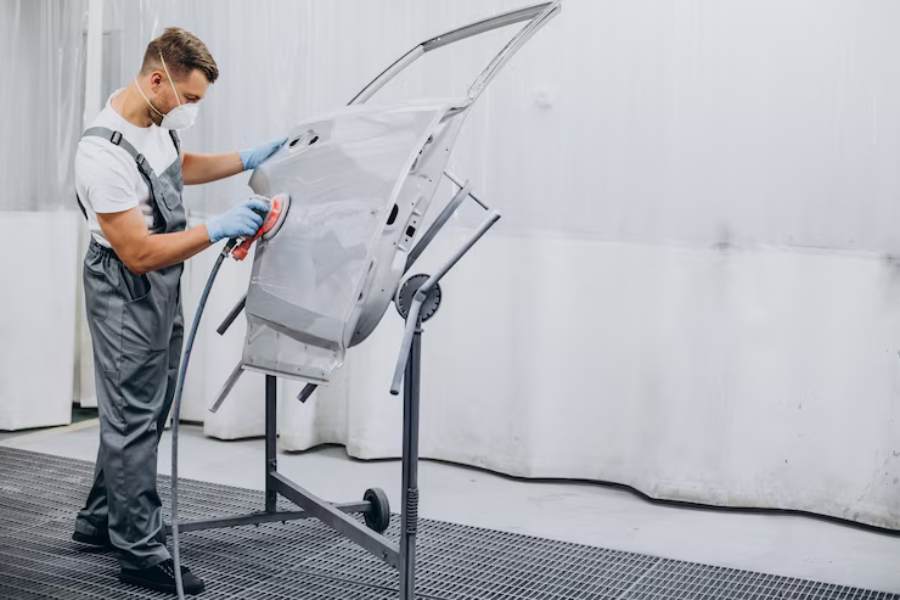Selecting the right paint booth can significantly impact the quality of your finish, workplace efficiency, and compliance with regulations. Navigating the various options and certifications available may feel overwhelming, particularly with the numerous aspects to consider. An informed decision will enhance your effects and streamline your operations and conserve resources.
Understanding Paint Booth Requirements
Before diving into the options available, it’s crucial to understand the specific requirements set forth by regulatory bodies. Numerous regulations exist across different regions, such as the Environmental Protection Agency (EPA) guidelines in the United States, which focus on air quality and hazardous materials management.
Compliance with local laws is not just advisable; it’s non-negotiable for any operation that incorporates paint booths. An auto body paint booth needs to meet the standards regarding emissions and ventilation. This means you should consider what type of filtration systems are in place, how they manage particulate matter, and how they comply with volatile organic compound (VOC) limits. Each component should work in harmony to ensure a safe environment for both employees and clients while avoiding potential penalties.
Types of Paint Booths
Different paint booths serve various purposes depending on the industry’s needs. Some common types include downdraft booths, crossdraft booths, and side-draft booths. The choice between these options often hinges on how much air circulation and control of overspray are required. A downdraft booth, for instance, pulls air downward, preventing overspray from settling on the freshly painted surfaces.
This style is particularly effective for larger vehicles or particularly intricate works where precision matters. A crossdraft booth might be more cost-effective for smaller jobs, where air movement is less complex. Certain specialized booths address unique needs, such as explosion-proof designs for flammable materials, which showcase an understanding of buyer needs as well as compliance with safety standards.
Cost Considerations
Budgeting for a paint booth involves more than just the initial purchase price. Operational costs, including maintenance, materials, and energy consumption, can add up. Consider the potential savings associated with improved efficiency and better workflows. While the lowest price may seem attractive, evaluating the total cost of ownership is critical.
High-quality booths tend to utilize advanced technologies that can reduce energy consumption or minimize waste. LED lighting can enhance visibility and cut down on electricity costs, while advanced filtration systems improve air quality, which means less downtime and compliance issues.
Vendor Reputation and Support
Selecting a reputable vendor can make a significant difference in your buying decision. Look for manufacturers that offer comprehensive warranties and after-sales support. This ensures that you receive a quality product and that you have resources for maintenance and troubleshooting in the future. Online reviews and testimonials can provide insight into a vendor’s reliability and customer service. Manufacturers with a solid track record are more likely to offer equipment that meets stringent regulations and performs efficiently over time.
Vendors who prioritize customer satisfaction often provide training resources, user manuals, and responsive technical assistance. This level of support can be especially valuable when integrating new equipment into existing systems. Choosing a vendor with proven expertise minimizes downtime and enhances long-term productivity.
The Importance of Space and Location
Don’t underestimate the impact of the booth’s physical location and the space allocated for its operation. The proper installation site affects both workflow and compliance with safety regulations. Consider factors such as accessibility for larger vehicles and the distance from often frequented areas to minimize exposure to fumes and ensure safety.
Evaluate the structure of the facility to determine whether modifications are necessary for optimal airflow or if you require a higher ceiling. Each decision should take into account the square footage and physical layout of your workshop to ensure that every piece of equipment works seamlessly.
Adequate space allows for better maneuverability around the booth, reducing the risk of accidents or workflow interruptions. Positioning the booth near existing ventilation systems can help optimize air circulation without requiring extensive retrofitting. Thoughtful planning of the booth’s location contributes to smoother operations and helps maintain a clean, efficient, and safe working environment.
Evaluating Future Needs
When choosing a paint booth, think about long-term requirements as well. The industry is evolving, with new materials and techniques constantly emerging. Investing in equipment that can accommodate these changes can future-proof your operations.
Having adaptable systems allows for the incorporation of advanced technologies like automated controls or enhanced ventilation systems without major overhauls. Choosing wisely now can save substantial time and money down the line, making your business more competitive. Prioritize options that reflect current market trends and anticipate future developments for sustained relevance and efficiency.
The choice of a paint booth is multifaceted and requires careful consideration of various factors, from compliance and cost to adaptability and vendor reliability. Knowing what to prioritize allows you to make an informed, strategic decision that aligns with both your operational goals and regulatory mandates.

